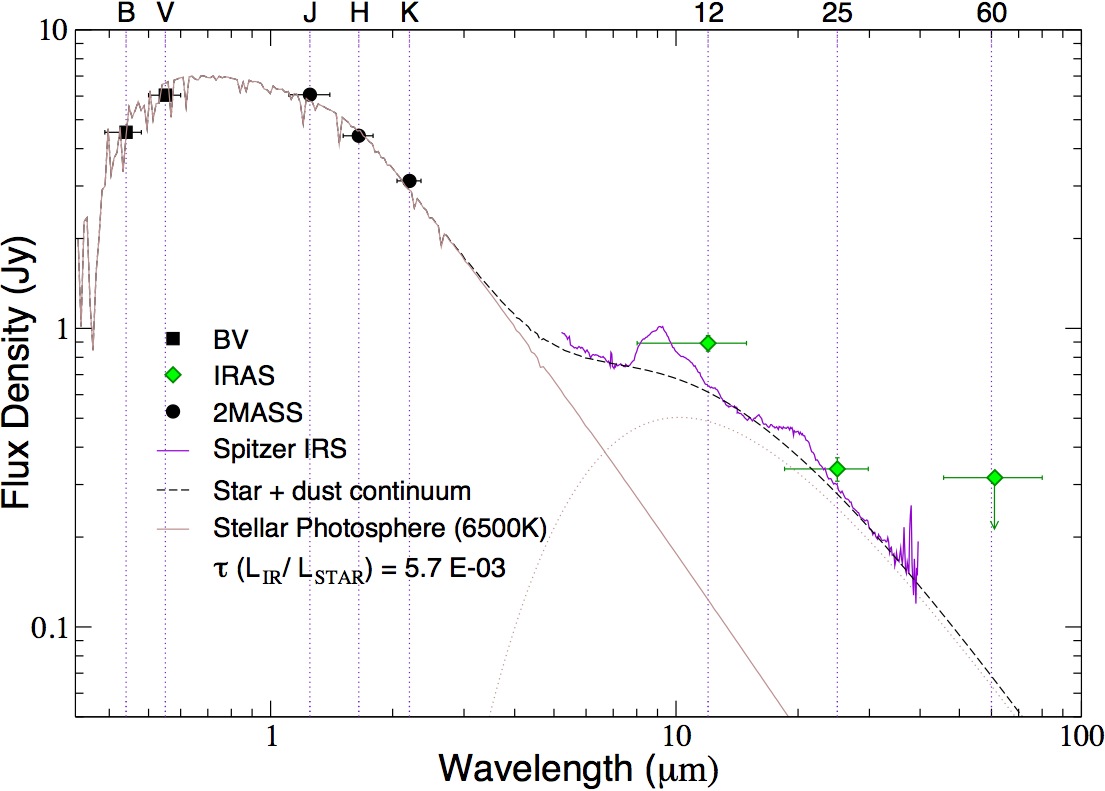Violent Early Lives of Terrestrial Planets
Understanding how rocky Earth-like planets form and evolve around their parent stars is paramount to the question of how life forms on planets and whether or not other sentient beings can exist in the universe. Theoretical work and simulations predict that planets like the Earth are built up through collisions between planetesimals (asteroid-sized rocks) and eventually giant impacts between planetary embryos (planet core-sized rocks). Giant impacts in which a terrestrial (Earth-like) planet accrues most of its final mass are theorized to occur up to a few hundred million years after a star is born. I seek to confront these theories of terrestrial planet formation events with observational results. Collisions of rocky objects necessarily produce copious amounts of dust that, when orbiting at Earth-like separations from their host star, will be heated to comfortable temperatures of roughly 300 Kelvin (80 degrees Farenheit). Dust having this temperature will emit most of its thermal radiation at a characteristic wavelength of 10 microns (see Figure 1). Thus, by cross-correlating all sky infrared catalogs with stellar catalogs I can identify stars with evidence for dust in their terrestrial planet zone indicative of recent or ongoing terrestrial planet evolutionary events.
Melis et al. 2010 find that terrestrial planet formation is common around Sun-like stars and that these planets accrete significant amounts of mass through giant impact type-collisions that occur when the host star is between roughly 30 and 100 million years of age. In contrast, for stars a few times the mass of the Sun (intermediate-mass stars) I have found that this epoch is much earlier in the star's life; between roughly 10 and 20 million years of age (Melis et al. 2013; see also the press release).
